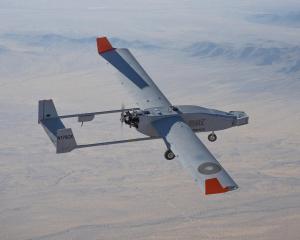Making Skies Safe for Unmanned Aircraft
NASA and its partners are taking flying unmanned aircraft systems (UAS) closer to operating in harmony with other aircraft in the National Airspace System (NAS).

NASA’s UAS Integration in the NAS project, used the Navmar Applied Sciences Corporation’s unmanned TigerShark aircraft for its Flight Test Series Six project. The TigerShark performed a systems checkout flight at NASA’s Armstrong Flight Research Center in July 2019.
A new video from NASA Aeronautics provides a behind-the-scenes look into the technology and testing used during a nearly decade-long effort by its UAS Integration in the NAS project, along with the Federal Aviation Administration (FAA), in creating rules that certify unmanned aircraft to safely coexist with other air traffic.
The goal is to enable more routine access of UAS to the airspace for a growing number of new commercial and public service opportunities, such as real-time fire surveillance, infrastructure and pipeline inspections and medical transportation.
“The work that we are doing will contribute data required for those who come after us to know how to safely integrate this type of airplane into the national airspace,” said UAS NAS project manager Mauricio Rivas. “It has taken a lot of work to integrate manned airplanes into different parts of the airspace, and it will take the same level of effort, or perhaps more, to integrate unmanned airplanes.”
NASA began its UAS Integration in the NAS project in 2011. Work since then has included multiple simulation efforts and six flight test series that focused on validating these simulations, and on supporting the development of minimum operational performance standards (MOPS) for Detect and Avoid (DAA) systems.
Source: U.S. National Aeronautics and Space Administration
- 316 reads
Human Rights
Ringing FOWPAL’s Peace Bell for the World:Nobel Peace Prize Laureates’ Visions and Actions

Protecting the World’s Cultural Diversity for a Sustainable Future

The Peace Bell Resonates at the 27th Eurasian Economic Summit

Declaration of World Day of the Power of Hope Endorsed by People in 158 Nations

Puppet Show I International Friendship Day 2020

